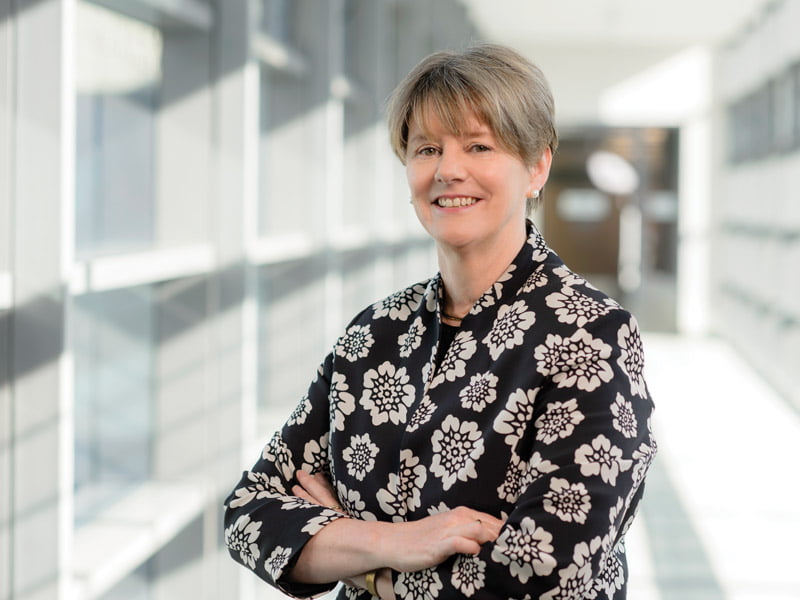If intellectual property is the measure of a nation’s innovation abilities, Patricia Kelly wields the yardstick.
Ms Kelly, a long time public servant, started her career in social and welfare areas, before moving into the industry department in the 1990s. For the last two years she has been director-general of IP Australia and is now driving a program of internal innovation and change.
The organisation’s 2015 report notes that it received 25,947 standard patent applications in 2014, down 13 per cent compared to 2013, which has been attributed to a legislative change which raised the inventive threshold for patents. However just 1,979 of those applications came from Australian residents – a 35 per cent drop.

Ms Kelly can’t do anything to make Australians more inventive – but she is spurring IP Australia’s own innovation initiatives to make the process of applying for IP protection more streamlined.
IP Australia has embraced the digital service model that is being pushed by the Digital Transformation Office. Four years ago about 12 per cent of IP Australia’s customers transacted online. On Ms Kelly’s watch that number has soared to 97 per cent.
“It’s fair to say our systems are scrambling to keep up with the high demand,” she acknowledged, noting that IP Australia had probably underinvested in its website in the past, given that it has become its most important communications and transaction channel.
To best meet the needs of a new class of self-serve customer IP Australia has run trials of IBM’s Watson and tested a series of other virtual assistants (VAs). Ms Kelly said that the agency had worked with the ATO to test a range of VAs, which she said made sense given the Government’s stated ambition to have similar interfaces for citizens across services.
A new website will be unveiled in April, followed by the introduction of a VA in May, initially in the Trademark area.
According to Ms Kelly; “We aim to help our customers better understand the process of registering and maintaining a Trade Mark and especially seek to support small to medium enterprises navigate the intellectual property system. We also believe introduction of a VA system will facilitate higher quality and more timely and accurate registrations.”
IP Australia has also announced it will use NICTA spinout TrademarkVision to develop a search platform for its trademark examiners.
Using cognitive and natural language processing the VA is being developed by IP Australia in partnership with Datacom and Nuance. Ms Kelly said that IP Australia was working with other Nuance users, including the Australian Taxation Office, to “maximise outcomes.”
“Our ultimate vision is to work collaboratively with other agencies to explore possibilities of a government-wide Virtual Assistant to support Australian businesses in a seamless digital experience.”
While internal innovation is a key focus for Ms Kelly, she has a clear eyed view of the nation’s strengths and weaknesses with regard to innovation.
While Australia’s research record and quality is good, “We are weak on commercialisation of research and certainly weak on patenting. We have also developed some serious weaknesses in terms of STEM (Science, technology, engineering and maths) education and STEM skills.
“The WIPO (World Intellectual Property Organisation) puts out this thing called the Global Innovation Index every year – we are strong on the inputs to the system, overall we rank 17th but we rank 9th on human capital and research and fourth on infrastructure, and 9th on market sophistication and 11th on our institutions – but on knowledge and tech outputs including patents we rank 39th on business sophistication we rank 23rd.”
The challenge now is to boost the national intellectual property and then leverage that on a global commercial stage.
One of the great opportunities for Australia’s IP is the Square Kilometre Array radio-telescope that Australia and South Africa will co-host. Ms Kelly was a key player in Australia’s SKA bid, and is now the nation’s voting member on the governing body of the international project.
Ultimately that body (a company limited by guarantee) will be replaced by an international treaty that will manage the project, but for the present Kelly has Australia’s vote.
Besides leveraging the unique geography of a remote part of Western Australia, the SKA offers; “A unique opportunity for Australia to host a piece of global science infrastructure and with that will come a lot of fine minds and scientists that will be using this infrastructure and developing it. So Australia will get access to a broader range of very skilled people, new ideas, and new technologies.
“It’s not only radio astronomy, a lot of this is around high speed data, big data, signal processing and also looking at things like green energy development because all these antennae need to be powered over a very remote area of Australia or South Africa. So it’s a great opportunity to develop some green energy solutions because it is a very energy hungry device.”
The $294 million that the Government earmarked for the SKA in its Innovation Statement last December will be Australia’s ten year contribution under the yet-to-be-developed SKA treaty that will lead to the telescope being built starting in 2017/18.
Overall Ms Kelly believes that the Innovation Statement hit the right issues around “capital and having the right financial and incentive environment and changing the culture around risk and collaboration. The thing we are really bad at is taking our very good science and research and turning it into commercial outcomes and that needs better links between business and industry.”
Do you know more? Contact James Riley via Email.

